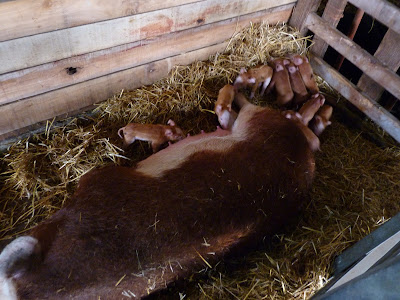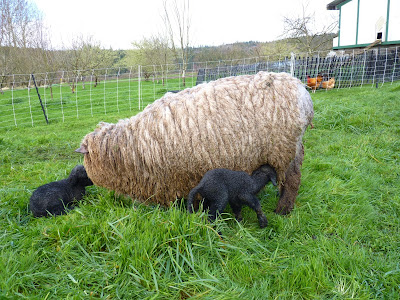 |
| Saffron & Crimini Mushroom Pasta |
This creamy pasta is very rich and makes a great meal when served with a light side salad.
Saffron & Crimini Mushroom Pasta
(I based this meal on a recipe for Crab Fettucine with Wild Mushrooms, served at Baked Alaska in Astoria, OR. Since I didn't have any crab meat on hand, it ended up being a vegetarian dish!).
(I based this meal on a recipe for Crab Fettucine with Wild Mushrooms, served at Baked Alaska in Astoria, OR. Since I didn't have any crab meat on hand, it ended up being a vegetarian dish!).
Ingredients
12 oz. pasta
4 tablespoons butter
8 oz. crimini mushrooms (from this week's box)
8 oz. crimini mushrooms (from this week's box)
2 cloves garlic, minced (from a previous week's box)
1 cup white wine
1/2 cup heavy cream
Saffron (a pinch or two)
Salt & pepper
-Cook pasta.
-Melt the butter in a saute pan over medium heat.
-Saute the mushrooms until brown (around 10 minutes) and season them with salt & pepper.
-Add the garlic.
-Stir in the white wine and a pinch of saffron. Reduce the wine by half.
-Add the cream and blend with the wine mixture.
-Serve over pasta.

















































